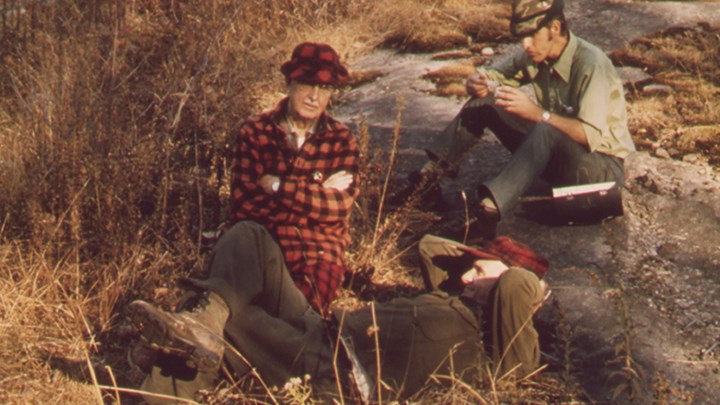
by Brian McCombie - Tuesday, April 16, 2019

It is no surprise to hunters that the various 2018 hunting seasons in New York State resulted in “the lowest number of recorded hunting-related shooting incidents and tied the 2016 mark—13—as the safest on record,” as reported by the Olean Times Herald and other news sources in January. The statistics come straight from the state’s Department of Environmental Conservation (DEC), the regulatory agency for environmental issues statewide.
For a quick recap, the DEC documented five tree-stand accidents involving hunters in 2018, a significant drop from the 12 reported in 2017. No deaths were caused in New York tree-stand accidents in 2018. However, three hunting-related fatalities and 13 hunting-related shooting incidents were reported. These tragedies, though, could have been prevented.
As noted in the Olean Times Herald, “of the three fatalities, two were self-inflicted and caused by unsafe handling of firearms, and one was a two-party firearm incident caused by a failure to positively identify the target.” In addition, of the 13 hunting-related shooting incidents that occurred last year, seven were two-party firearm incidents, six were self-inflicted and three resulted in fatalities that could have been prevented if fundamental, common-sense gun safety rules such as those provided by the NRA had been followed.”
In an interview with the news outlet, DEC Commissioner Basil Seggos explained, “Although the number of hunting-related incidents have declined dramatically in the last several decades, we believe every one of these could be avoided if hunters follow the laws and basic rules of hunting safety. We encourage hunters to wear hunter orange and to be sure, beyond a doubt, of their target and what lies beyond." (Knowing your target and what lies beyond is No. 4 in the NRA’s list of top 10 gun safety rules.)
As the article noted, to put these numbers in perspective, New York saw 98 incidents in 1991, 110 in 1979 and 166 in 1966, 13 of which were fatal. While the number of hunters is declining, the hunting incident rate (incidents per 100,000 hunters) is falling even faster. Since the 1960s, the number of hunters has declined about 20 percent, while the incident rate has declined almost 80 percent. “The current five-year average is 3.1 incidents per 100,000 hunters, compared to 19 per 100,000 hunters in the 1960s.”
As Seggos explained, “In large part, hunting in New York continues to be a safe and enjoyable activity thanks to the efforts of 2,600 DEC staff and volunteer hunter education program instructors that teach nearly 50,000 students each year."
Actually, New York has a very long history of educating people about safe hunting and proper firearms handling. As this NRAHLF.org website has noted numerous times, it was the NRA that in 1949 worked with the state of New York to mandate and develop America’s first hunter education and safety course for new hunters. An NRAHLF.org article from 2017 noted that no such course existed at the time so New York officials solicited help from the organization that knew the most about firearms, firearms safety and hunting: the NRA... .
The NRA continues to be a leader in hunter education and firearms safety with the recently debuted NRA Online Hunter Education course, designed to help new hunters of all ages learn how to be safe and responsible members of the hunting community. This state-of-the-art course is the most comprehensive online hunter education instruction in the United States—and it's 100-percent free. Currently, the NRA Online Hunter Education course is accepted by seven states as the required classroom portions of their hunter education requirements, with more states signing on every year.
However, there is still much work to do, especially when it comes to educating hunters about the safety issues concerning hunting stands. In North Carolina, for example, “there were 27 hunting-related accidents during the 2017-2018 hunting season… including five deaths, the highest number in the past six years. All five fatalities involved falls from tree stands,” said Chet Clark, the Wildlife Commission’s eastern outreach manager, as reported by the Citizen-Times.
According to Clark, contrary to popular belief that firearms are the most dangerous part of hunting, tree-stand accidents are the leading cause of injury to hunters every year. “Most of these accidents are avoidable,” Clark said. “Always remember to wear a fall-arrest system and use it properly. Also, follow your tree-stand manufacturer’s recommended safety procedures. This little bit of precaution can mean all the difference when out in the field.”
Editor’s Note: Tree-stand accidents remain the No. 1 cause of hunting accidents nationwide. For more information on hunter safety harness systems, please check out products from companies such as Summit Treestands and Hunter Safety System (HSS), which offer an array of comfortable and functional safety harnesses and accessories designed to protect hunters against falls without limiting movement. As these companies strive to meet the needs of male and female hunters alike, in 2014 I field-tested HSS’ HSS Contour Harness for NRA’s American Hunter, which we recognized with a 2015 NRA Golden Bullseye Award as the Women’s Innovation Product of the Year.—Karen Mehall Phillips
About the Author: Brian McCombie is a regular contributor to NRAHLF.org and a field editor and editorial contributor for the NRA's American Hunter. He writes about firearms and gear for the NRA's Shooting Illustrated website, as well handling public relations and marketing for companies and manufacturers in the shooting sports industry. He is a member of the National Rifle Association and the National Shooting Sports Foundation. Brian likes hunting hogs, shooting 1911s chambered in 10 mm and .45 ACP, watching the Chicago Bears and relaxing with Squinchy, his orange tabby cat.
Follow the NRA Hunters' Leadership Forum on Twitter @HuntersLead.
E-mail your comments/questions about this site to:
[email protected]
